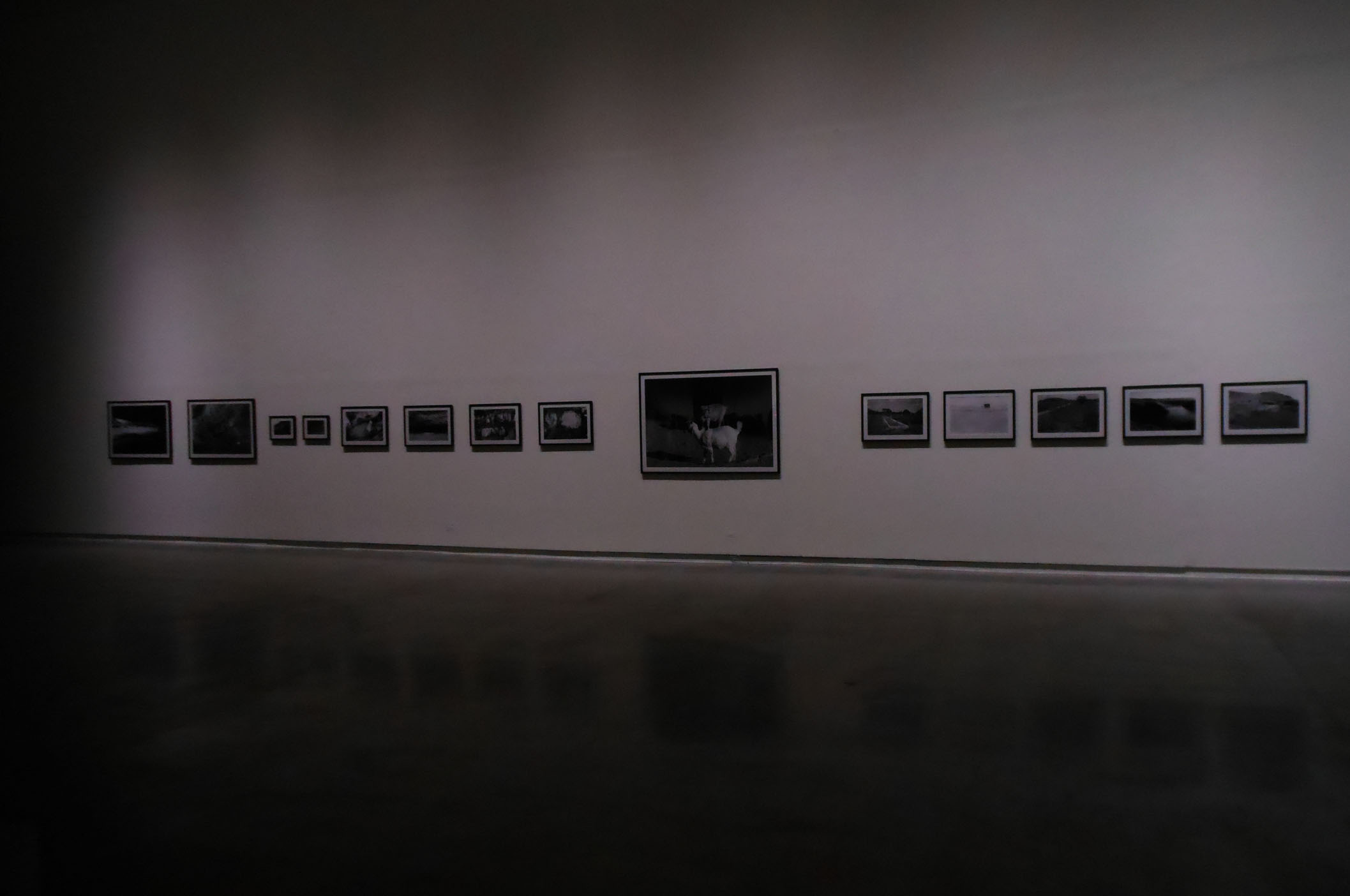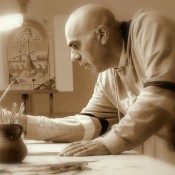【藝評】
【Berenice Jolena Baldini】Carlo Mirabasso’s painting has deep roots in the spiritual Umbrian land, and it is in Umbria that the artists has decided to live, choosing for his home the noble Bettona, a short distance from Assisi and from Perugia, international centers of spirituality and culture and places of great architectural beauty which, like every other city and town in Umbria, are an example of care for the artistic heritage, which in this region is preserved and protected in all its parts, from the antefixes of the roofs to the frescoes in the churches.
Carlo Mirabasso的畫作最引人注意的是它的垂直性。在他的畫裡,不管是建築物、房舍、鐘樓,甚至連絲柏樹,這些象徵物件全部是向上發展、垂直豎立、如同箭頭般的朝向天空。儘管山城中的簡樸生活反映出畫家的心靈層次,作品的畫面更明顯的讓人感受到翁布里亞區的充分日照,就算是分隔地平線的天空,有時是夏日破曉的紫色,有時卻是百花盛開的春天藍。
In these landscapes, where Umbria and its legend are breathed, but also the loveliness of every place in our country of walled towns (Pienza, Feltre, Lucera, or any other Italian town preserved within medieval, cyclopean or Messapian walls, in any case protected from the building havoc of the past decades), with the houses, castles, bell towers, arches, and cypresses, there are also faces, mostly young, sweet female faces, or stern historical profiles that give variety to the enchantment.
翁布里亞地區的大地景色也是Carlo Mirabasso的靈感來源,我們可以看到畫中的房舍、城堡、拱門、鐘樓、絲柏樹等等,其中也有人像(大多是年輕甜美的女性面容),或是堅毅挺立的古蹟外觀,這些都增添了畫作多樣化的吸引力。
In a painting style that is apparently simply by virtue of its linearity, on the contrary the mathematical construction of Mirabasso’s walled landscapes reveals the harmony of the perspectives balanced by a masterly movement of assonances and dissonances, a synthesis of all the lessons of great painting, from Giotto’s perspective to those of the Cubists.
他那如同城牆般的風景畫,看似是用簡單的線條勾勒出來,但構圖卻是精確計算過的,就像是一篇巧妙調諧了和諧音與不和諧音的樂章,非常融洽。這種感覺就像是取自「Giotto喬托 (西方繪畫之父,義大利文藝復興的開創者,1266~1337)」到「立體派藝術家」的綜合體一樣。
【Andrea Galante】
A “delicate harmony” that – in his panel paintings, like 14th-century altarpieces, between pre-Cubist style studies and landscape verticalisms – is completed in his pictorial, almost marble-like techniques; full of a subtle material symbolism with a mural-type meaning in which the fresco technique re-emerges and, in that tranquility of places dear to De Chirico, in which space and time stop in the image of a frame, Mirabasso brings sensations of metaphysical memory back to the surface.
Carlo Mirabasso的畫風,像是14世紀的祭壇畫,又像是介於立體派前期與直列風景畫派之間;他那像是大理石般的木板畫充滿了微妙的有形象徵主義,像是文藝復興時期的壁畫再現。精緻的和諧感,寧靜,有如時空停格在這一幀畫布上,令人回想到喬治·德·基里科(Giorgio de Chirico 義大利超現實畫派大師,1888~1978)。
【Laura Scalabrini】
Carlo Mirabasso’s landscapes narrate the Middle Ages as the musicians and poets of the time would have narrated them and, perhaps, as they were lived in the convent cloisters. Mirabasso chooses shapes and colors that comfort, that tell of spirituality and which, for this reason, seem far from those Middle Ages that history has passed down to us. Quiet landscapes with a serene atmosphere, silent as young girls’ dreams. Dreams of all shapes that flee from the tall castles, bounce off the crenellated towers, and run to play with curlicues of swollen white clouds, forgetting the power wars of greedy men... We have decided to choose, to give color to the medieval and Renaissance banquets, without forgetting the toil and the food of the humble, the crenellated towers, the tall castles of the quiet, strongly medieval landscapes of Carlo Mirabasso from Bettona, a town whose territory is in that of Perugia, very close to Assisi, and many of those castles that inspire his works and enchant especially those who, like ourselves, love the beautiful things of the past and present.
Carlo Mirabasso的風景敘述中世紀,因為當時的音樂家和詩人會講述他們,也許他們住在修道院的迴廊裡。Mirabasso選擇舒適的形狀和顏色,講述靈性,因此,與歷史傳給我們的那些中世紀看起來相去甚遠。寧靜的風景,寧靜的氣氛,沉默的年輕女孩的夢想。從高大的城堡中逃離出來的各種形狀的夢想,從鋸齒狀的塔樓上彈開,奔跑與白色的膨漲的白色雲彩一起玩,忘記了貪婪的男人的權力戰爭......我們決定選擇,為中世紀賦予色彩還有文藝復興時期的宴會,而且還沒有忘記卑微的工作和食物,城塔安靜的,強烈的中世紀,Carlo Mirabasso景觀的高大城堡,來自Bettona,這個城鎮的地域在Perugia,與阿西西非常接近,許多城堡激發了他的作品,特別是那些像我們一樣熱愛過去和現在的美麗事物的城堡。
【Giorgio Tellan】
His is a successful representative synthesis, substantial and ingenuous at the same time, of landscapes of the soul, rendered using acrylic and tempera on wood panel, in which the houses, bulwarks, and churches rise to the value of symbols of a metaphysical world that, in its ascensional tension, reveals man’s aspiration, never present but underlying, towards the transcendental.
他是一個成功的代表,同時又充滿活力,擁有靈性的視野,在木板上用丙烯和蛋彩畫呈現,畫中的房屋,舷牆和教堂昇華為形而上世界的象徵價值,在其上升的張力中,揭示了人類的願望,永遠不會呈現,而是潛在的,走向超然。










